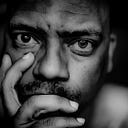After a Year, My Pandemic Hobby Became a New Passion
How a year of confinement allowed me to learn to be good at something new and, more importantly, what I didn’t need to be creative.
The first camera I bought was supposed to be a way to upgrade my wife’s weekly Facebook live. Then I bought a second camera, then a fourth.
It was roughly a year ago when my accidental pandemic hobby became a thing. I was desperate to get outside and do, well, anything really. The occasional run was fine, but I could only run for so long. Bikes were impossible to come by. And as much as I like a long walk, I need to be doing something during that time.
By the time I pulled the trigger on the cameras, I had done a ton of research. An affordable camera that’s good for streaming and vlogging? The Sony A5100 with a Sigma 16mm f1.4 lens. I didn’t know what any of those numbers meant. I just knew that YouTube said buy those.
Between the cameras and the sound equipment we already had from podcasting, the live looked great. Except something was missing.
Lights! I bought two softbox lights and an LED light that I could use to color the background. Done and done. Except…
I started using the camera to shoot random things in the house. My wife, the kids, the dog, the new crocodile/horsehair Air Max 90’s I got on StockX (oh, the pandemic shopping). I was having a great time even if, in retrospect, my pictures were mostly terrible.
I ended up buying another camera that I could use for photography—a Sony A6000. YouTube told me it was a solid entry-level camera. YouTube was right. Except…
You learn quickly that you rarely get the exact photo you want directly from the camera. Either because you haven’t quite figured out what shutter speed, aperture, and ISO are and how they work together, or because you know nothing about composition, or you actually did everything right and want to do something a little more creative. That’s when I discovered Lightroom.
YouTube told me how to begin to edit photos. Cropping, adjusting light and color, playing with presets. I sat for hours going back and editing the same photos over and over. Poorly.
This was the first time in years that I had tried something brand new. I think there is a point in adulthood where new happens more and more infrequently. New friends, new love, new skills, that train slows down more and more as the years pass on.
I’m a creative person in a creative household. My wife is a New York Times Best Selling Author. My fourteen-year-old step-daughter is an incredible artist who is growing into an equally incredible animator. My eight-year-old is developing a passion for content creation (we’ve recorded a couple of episodes of his podcast, and he’s an aspiring YouTuber). I don’t think I would have ventured so far down this path if I wasn’t constantly watching the people around me be brave enough to just do the things.
So here I was, becoming a photographer or, rather, a fauxtographer. My insecurity and self-deprecating nature won’t let me claim it fully.
At some point, I realized I needed a different lens. My 16mm was too wide, so I got a Sigma 30mm f1.4. Now I knew what these numbers meant. I needed something a little more suited for portraits and street photography. I love a good candid shot. My wife has been my test dummy in this regard. We’ll talk about nothing in particular when I see a moment and pick up my camera. My muse rarely fails me.
There is something liberating in getting better at something simply for the sake of getting better. I have no intention of being a professional photographer. I’m not looking to make this any real business. I have started selling some of my work. I have no thought that I will make any great sum of money but selling a couple of prints feels like a logical way to gauge whether I’m actually progressing.
So, I bought another camera recently. I’m starting to get side-eyes from the wife. It’s a Sony A6500. Something about this camera feels like I graduated from middle school to high school. It’s a step below what most would consider a “professional” camera. And yes, I will eventually. It’s inevitable.
I am very aware of just how privileged a conversation this is. My wife often talks about Maslow’s hierarchy of needs and how just about all of those needs need to be addressed to create. We love the idea of the starving artist. We love to think that art is the result of a good dose of suffering. It’s a romantic notion. But the truth is that the cost of creativity isn’t despair or poverty. Creativity exists despite pain, not because of it.
That is what the pandemic and a camera have taught me.
I’ve been so depressed and heartbroken that I lost my hair. I have been homeless. I have a lifetime of anxiety rattling around in my skull. I have spent the majority of my adult life sleeping four to five hours a night. I have been supremely creative through it all. So much so I feared the stability that I simultaneously longed for. How does someone create and be happy?
In some ways, I’m still discovering the answer to that question. It can often be a slower process. Arduous even. It rarely happens at three in the morning like it once did. But it comes. Sometimes with a pen, sometimes with a microphone, sometimes with a camera.
